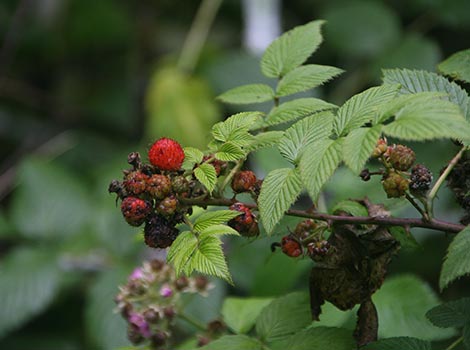Species Data

Least Concern
Introduced
Species Overview
Rubus niveus, known locally as ‘mora’, originates from the Himalayas and was introduced to Galapagos in the 1970s for agricultural purposes. Little did they know that this tenacious plant would actually render massive areas of farmland useless and also impact on native flora – in particular the Scalesia forests of the humid highlands. The seeds are spread by rats and native birds that feed on the fruit and have now been spread to most of the Islands.
The main reason for the colonising success of this species is the dense ‘seed banks’ that accumulate – densities of up to 7,000 seeds per m2 have been recorded in one area. Seeds can stay dormant for 10 years, waiting for the ideal conditions to germinate. This allows the mora to out-compete many native plants resulting in dense thickets of this prickly shrub.
Hill Raspberry features on these pages:
For further information you can visit:




